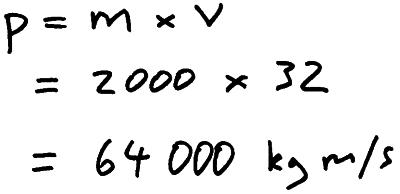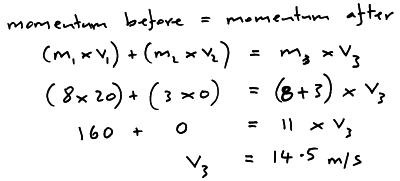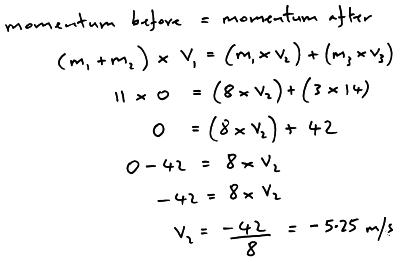The momentum (p) of an object is found by multiplying the objects mass (m) in kilograms (kg) by it’s velocity in metres per second (m/s).
momentum = mass x velocity
p=m x v
Momentum is measured in kilogram metre per second (kg m/s).
Example; A car of mass 2000 kg is travelling at 32 m/s. What is its momentum?

The law of conservation of momentum
When two objects interact the total momentum remains the same provided no external forces are acting (a closed system).
The momentum before = the momentum after.
Example; A toy car of mass 8 kg is travelling at 20 m/s. It collides with a car of mass 3 kg which is stationary. The two cars join together and move of as one object, what is the velocity of the two cars as they move off together?


Example; Two objects are in stationary and in contact with each other. They are pushed apart by an explosion. The 3 kg toy car moves right with a velocity of 14 m/s and the 8 kg car moves left. What is the velocity of the 8 kg toy car as it moves left?






